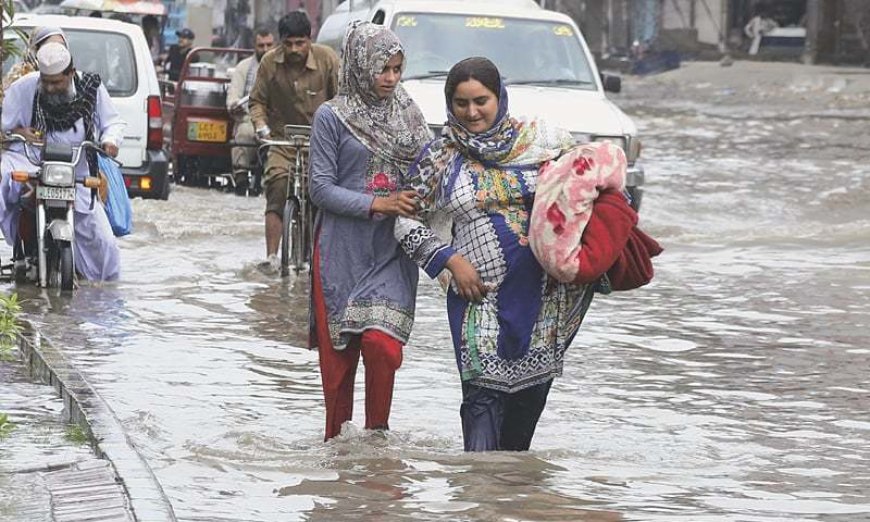Flood Warnings Issued by NDMA
encored.xyz, encored, breaking news, encored.xyz.com

Flood Warnings Issued by NDMA
Overview
The National Disaster Management Authority (NDMA) has issued a flash flood warning across various regions in Pakistan due to impending heavy monsoon rains. Citizens are strongly advised to avoid flood-prone areas and seek safe shelter during the downpours. This warning is part of a series of precautionary measures to ensure public safety and minimize potential damage.
Regions Affected
The NDMA has identified several key regions at risk of flash floods:
- Punjab: Particularly southern districts and areas along riverbanks, including Multan, Muzaffargarh, and Dera Ghazi Khan.
- Sindh: Coastal regions and areas along the Indus River, such as Karachi, Hyderabad, and Sukkur.
- Khyber Pakhtunkhwa: Northern and hilly areas prone to sudden water surges, including Swat, Chitral, and Nowshera.
- Balochistan: Areas with poor drainage systems, including Quetta, Gwadar, and Lasbela.
- Gilgit-Baltistan: Mountainous regions with potential for landslides and floods, including Gilgit, Hunza, and Skardu.
Monsoon Rainfall Forecast
The Pakistan Meteorological Department (PMD) has forecasted heavy to very heavy rainfall in the following days:
- Intensity: Expected to be intense and prolonged, with some areas receiving up to 200mm of rainfall.
- Duration: Likely to last for several days, with peak intensity over the weekend.
- Areas: Widespread across all four provinces, with particular severity in southern Punjab, coastal Sindh, and northern Khyber Pakhtunkhwa.
Safety Measures and Advisories
The NDMA has issued several advisories to ensure public safety:
- Avoid Flood-Prone Areas: Citizens are advised to stay away from riverbanks, low-lying areas, and coastal regions.
- Seek Safe Shelter: Residents in vulnerable areas should move to higher ground or designated evacuation centers.
- Emergency Supplies: Keep essential supplies, including food, water, and medical kits, readily available.
- Stay Informed: Regularly monitor weather updates and follow instructions from local authorities.
- Avoid Travel: Refrain from unnecessary travel, especially through areas prone to flooding and landslides.
Preparedness Measures
In preparation for potential flash floods, the NDMA has taken the following steps:
- Coordination with Local Authorities: Enhanced communication with provincial and district disaster management authorities to streamline response efforts.
- Rescue and Relief Operations: Deployment of rescue teams, boats, and helicopters for immediate response in case of emergencies.
- Public Awareness Campaigns: Dissemination of information through media and social platforms to educate the public on safety protocols.
- Infrastructure Checks: Assessment and reinforcement of flood defenses, including levees and drainage systems, to mitigate potential damage.
Potential Impacts
The heavy monsoon rains and subsequent flash floods may lead to:
- Displacement of Residents: Thousands may be forced to leave their homes, leading to temporary shelters and displacement issues.
- Damage to Property: Significant damage to homes, infrastructure, and crops, impacting the local economy and livelihoods.
- Health Risks: Increased risk of waterborne diseases due to contamination of drinking water and stagnant water.
- Economic Losses: Disruption to transportation, agriculture, and daily activities, potentially leading to significant economic losses.
Detailed Regional Impacts
- Punjab: Floodwaters are expected to affect agricultural lands, potentially destroying crops and livestock. Urban areas may experience significant disruption in public services.
- Sindh: Coastal erosion and flooding can damage infrastructure and housing. The city of Karachi is particularly vulnerable to urban flooding due to inadequate drainage systems.
- Khyber Pakhtunkhwa: Landslides and flash floods can lead to road blockages, isolating communities and hampering relief efforts.
- Balochistan: The arid region's poor infrastructure may exacerbate the flooding impact, leading to widespread displacement and damage to property.
- Gilgit-Baltistan: Mountainous areas are at risk of landslides, which can destroy homes and block critical access routes.
Response and Relief Efforts
The NDMA, along with provincial disaster management authorities, is actively engaged in:
- Evacuation Plans: Ensuring timely evacuation of residents from high-risk areas through pre-established routes and evacuation centers.
- Relief Camps: Establishing temporary shelters with food, water, and medical care to support displaced populations.
- Resource Allocation: Allocating necessary resources and funds for immediate relief efforts, including the provision of clean water, sanitation facilities, and healthcare services.
- Post-Flood Rehabilitation: Planning for rehabilitation and reconstruction of affected areas, focusing on rebuilding infrastructure and restoring livelihoods.
Government and Community Involvement
- Government Initiatives: The federal and provincial governments are coordinating efforts to provide timely assistance and resources. This includes the deployment of military forces for rescue operations and the provision of financial aid to affected families.
- Community Participation: Local communities are encouraged to participate in preparedness and response activities, including volunteer rescue operations and community-based early warning systems.
- Non-Governmental Organizations (NGOs): NGOs are playing a critical role in providing humanitarian aid and supporting rehabilitation efforts.
Climate Change Considerations
- Increased Flood Frequency: Climate change is contributing to more frequent and severe weather events, including heavy monsoon rains and flash floods. This necessitates a more robust and adaptive approach to disaster management.
- Long-Term Strategies: There is a need for long-term strategies to mitigate the impact of climate change, including the development of resilient infrastructure, sustainable water management practices, and community-based disaster risk reduction programs.
Conclusion
The NDMA’s flash flood warning is a crucial measure to protect lives and property amidst the upcoming heavy monsoon rains. By following safety advisories and staying informed, citizens can minimize the risks and ensure their safety during this challenging period. Continuous efforts from the government, communities, and organizations are essential to effectively manage the situation and support affected populations.

 Admin
Admin 





